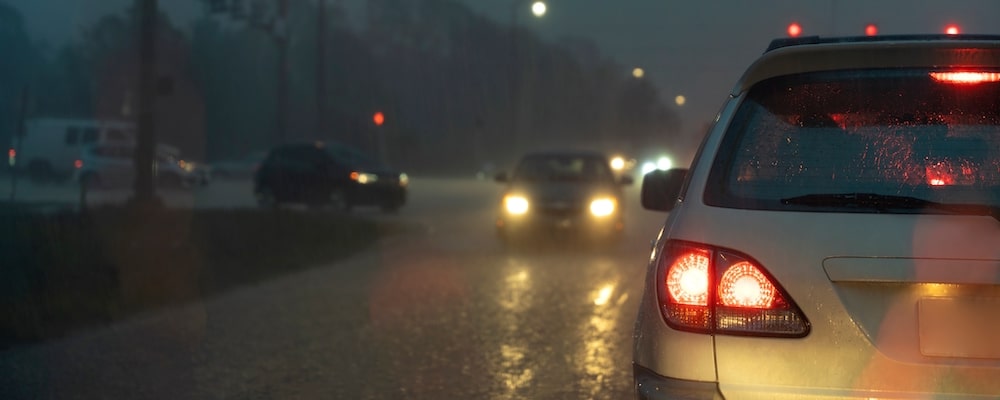Every year, Texas faces a variety of challenging weather conditions that lead to unexpected weather-related car accidents. From torrential rains to occasional icy roads, drivers find themselves navigating hazardous situations that can quickly turn dangerous. Understanding how to safely navigate these adverse conditions is crucial to reduce the risk of accidents.
While Texas is known for its sunny climate, the sudden and intense weather changes can catch many drivers off guard. Heavy rain, hailstorms, and fog are common culprits that decrease visibility and road traction, making driving hazardous. These conditions create a perfect storm for accidents, demanding heightened awareness and preparedness from all drivers.
Remaining informed about weather forecasts and adjusting driving habits accordingly can significantly decrease accident rates. Simple changes, such as lowering speed, increasing the following distance, and ensuring vehicle maintenance, can make a considerable difference in safety. Texas drivers can stay safer by recognizing these risks and taking proactive measures. However, if you experience a bad weather car crash in Texas, you should contact a Texas injury lawyer as soon as possible.

Impact of Texas Weather on Driving Conditions
Texas experiences a variety of weather patterns that significantly impact driving conditions, leading to numerous car accidents each year. Rain, hail, and fog are particularly challenging, resulting in decreased visibility and slippery roads. By examining these patterns and reviewing accident statistics, one can understand how weather influences road safety in Texas.
Weather Patterns and Road Safety
Rain is one of the most common weather conditions affecting Texas roads. It reduces tire grip, increasing stopping distances and the risk of skidding. In urban areas, water accumulation can lead to hydroplaning, making it difficult to control vehicles.
Hail can damage windshields and block road visibility, while fog obscures vision, creating hazardous conditions. Drivers often struggle to navigate in these conditions, increasing the risk of collisions. Adequate vehicle maintenance and cautious driving are crucial in minimizing risks.
Analysis of Accident Statistics
Weather-related accidents account for a significant portion of total traffic incidents in Texas. According to recent statistics, approximately 25% of accidents occur during adverse weather conditions. Rain contributes to the majority, with an increased incidence during spring and fall.
Hail and fog incidents are less frequent yet result in severe damage and injuries when they occur. Understanding these statistics highlights the importance of driver awareness and preparedness. Proper use of headlights and maintaining safe distances can reduce the risk of weather-related accidents.
Navigating the Aftermath of a Bad Weather Car Accident
Texas car accident weather conditions can complicate the process of dealing with car accidents. It is crucial to address legal responsibilities, document the incident thoroughly, and seek legal consultation to safeguard one’s interests.
Legal Aspects of Weather-Related Accidents
In weather-related accidents, determining fault can be complex due to the influence of adverse conditions like rain, ice, or fog. It is important for drivers to be aware of their legal rights, which typically include filing an insurance claim regardless of fault and receiving compensation for damages. Different states may have varying laws about negligence, which can impact liability. Ensuring compliance with local traffic laws and understanding one’s rights can be beneficial when navigating these legal waters. When dealing with insurance companies, having a clear record of the conditions leading up to the accident can help reinforce the case.
Steps for Safety and Documentation
Immediately after a Texas weather-related accident, ensuring safety is paramount. The first step is to move to a safe location if possible and call emergency services if there are injuries. Documentation plays a significant role in such incidents. Taking photos of the scene, the vehicles involved, and any road conditions like ice patches or poor visibility can provide crucial evidence. Collecting contact information from witnesses and writing down their statements can also be valuable. Using a checklist can be helpful to ensure no detail is overlooked, such as noting the time, date, and weather conditions. Proper documentation will be vital when communicating with insurance companies and legal advisors.
The Importance of Legal Consultation
Consulting a legal professional after a severe weather incident is often advisable. Lawyers specialized in car accidents can offer guidance on the next steps and help navigate the often complex claims process. They can evaluate the accident details to determine liability, especially when weather factors may obscure fault. Legal experts can also assist in negotiating with insurance companies, who may attempt to minimize payouts. They can provide clarity on what compensation to expect, including potential payouts for vehicle damage and personal injury. A seasoned lawyer will ensure that all legal rights are protected, aiding in achieving a fair settlement. Contact CarAccidentAttorney.com, a lawyer referral service, if you need help finding a Texas car accident lawyer.
